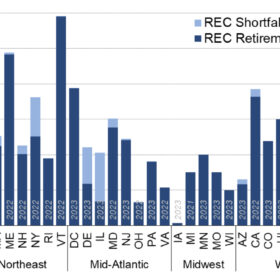A research team led by the Delft University of Technology in the Netherlands has outlined a roadmap for the optimization of monolithic perovskite/CIGS tandem solar cells and has found these PV devices may achieve a practical efficiency limit of 26.69%.
Using TCAD Sentaurus and GenPro4 modeling software, the scientists performed optical and electrical simulations of the materials and interfaces used in this type of tandem solar cell to better understand loss mechanisms and define a series of measures to improve efficiency.
The results were then calibrated by comparing simulated devices to three experimental devices: a tandem perovskite/CIGS solar cell; a single junction perovskite solar cell; and a single junction CIGS solar cell provided by Miasolé.
“The simulation platform is typically used in semiconductor research and development, as well as thin film and PV research. The CIGS sub-cell was based on on a state-of-the-art industrial device,” Delft University researcher, Paul Procel-Moya, told pv magazine.
The team noted that its work in this area differs from other numerical studies, as its focus is on the fundamental working mechanisms of the layers comprising the tunnel recombination junction (TRJ) and coupling-related loss calculations.
The study involved examining the energy alignment in TRJ layers to uncover the impact on external parameters of the baseline tandem solar cell, the exchange mechanisms between top and bottom cells, and the impact on the overall performance of the tandem system.
“Based on the main results, we propose a realistic roadmap for improvement of the tandem solar cell,” said Procel-Moya pointing to a four-pronged strategy towards improved performance. “We found in the simulation that the first stage should be fine-tuning the coupling tunneling junction between the two cells. It’s the first bottleneck.”
The first stage is to improve and optimize energy alignment at TRJ, while the second is to enhance the light management by minimizing the current mismatch between the sub-cells and reducing reflectance losses by adjusting perovskite and metallization thickness, for example. The third step is to improve the transport towards the tin oxide transport layer of the top cell. This step alone gave an estimated efficiency rise from 24.37 % to 25.13 %, according to the research. The fourth modification is to improve passivation in the top sub-cell.
Based on such modifications, the researchers calculated that the reference tandem cell could achieve an efficiency of 26.69 %. The team said that it expects that further “conversion efficiency gains are possible” by improving areas of the bottom cell, such as the absorber band gap energy and the passivation of the interface of CIGS and molybdenum layers.
Feedback received by Procel-Moya from other researchers currently experimenting at the lab scale confirmed that the TRJ focus was good advice. Looking ahead, the team will continue to do research on the physics of semiconductors PV and thin film with a focus on stability, studying reverse bias at the theoretical level, according to Procel-Moya.
The research appears in “Opto-electrical modelling and roadmap for 2T monolithic Perovskite/CIGS tandem solar cells,” published by Solar Energy Materials and Solar Cells. The team members were from the Netherlands institutions, Delft University of Technology, University of Twente, Eindhoven University of Technology, Netherlands Organisation for Applied Scientific Research (TNO), and U.S.-based MiaSole Hi-Tech Corp.
This content is protected by copyright and may not be reused. If you want to cooperate with us and would like to reuse some of our content, please contact: editors@pv-magazine.com.








By submitting this form you agree to pv magazine using your data for the purposes of publishing your comment.
Your personal data will only be disclosed or otherwise transmitted to third parties for the purposes of spam filtering or if this is necessary for technical maintenance of the website. Any other transfer to third parties will not take place unless this is justified on the basis of applicable data protection regulations or if pv magazine is legally obliged to do so.
You may revoke this consent at any time with effect for the future, in which case your personal data will be deleted immediately. Otherwise, your data will be deleted if pv magazine has processed your request or the purpose of data storage is fulfilled.
Further information on data privacy can be found in our Data Protection Policy.